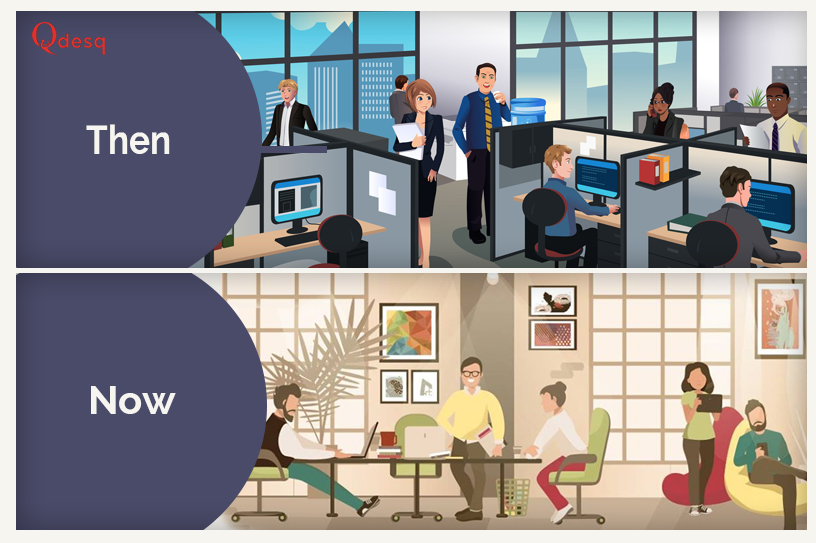Workspaces have changed drastically over the past few years. Cubicles, private corner offices are slowly vanishing. Now, brighter, cooler, and flexible offices define the vibe of a desired company, which is why larger firms are investing in “out of the box” office designs.
Employers have adopted various ways to cater to the needs of the employees like the adoption of technology, flexibility of working from remote areas, and much more. This calls upon the question – “How much has the office workspace changed over the past three decades.”
With the invention of the internet, the technology era boomed in the early 1990s. The networks of networks, otherwise called the World Wide Web, was widely available in August 1991 to be precise, and it changed how the workspace operated. The office culture grew diverse as more and more female employees came into the workforce, but the percent remained to under 30%. Office spaces were more functional, with open spaces as the preferred form of structure to boost communication and collaboration.
The industry has changed radically; earlier, employees used to spend all day at the desk with minimal conversation and leave as soon they were done for the day. Therefore, more and more individuals decided to exit the corporate culture due to stress and restricted working environment. Hence, the need to retain employees had risen, which resulted in more flexible offices.
There is a greater focus on feeling comfortable in the office space by including comfy seating, flexible hours, and working from home. The work areas are technology-driven with the rise in connecting software like skype, google hangouts, etc. The sharing of extensive data has become simpler through google drive, and we-transfer. This has broken down the wall of the communication barrier, where companies can expand themselves and collaborate internationally.
An ample amount of attention is provided to the architecture and interior design of the office. Colorful sketches, along with motivational quotes, are quite often found on the office walls. Furniture includes a long-running desk with no dividers, comfortable chairs like lounges, hammocks, recliners make the area feel like home, and this doesn’t restrict a worker to his/her desk.
Slowly people have realised that colors affect a person’s mood and can be strategically placed to extract the desired result. The colour of the walls is careful thought of, yellow, green, and blue are the trending hues for the offices.
Plants change the surroundings to a great extent, as well. According to the study, plants reported a 37% fall in tension and anxiety, a 58% drop in depression, low hostility by 44%, and a 38% reduction in fatigue. Plants are a calming sight, and they have been reported to increase productivity and creativity.
Along with that, a significant chunk of the population is rejecting the culture of the traditional offices and shifting to coworking spaces. The coworking spaces reduce the economical cost and let a person work towards its venture. With the notion of low commitment, coworking spaces exclude the stress of managing an office. The workspaces bring about a community of workers from different avenues of life and encourage collaboration and support.
With the concept of virtual office on the boom, the future looks bright for non-existent offices. Wearable tech and virtual reality will be a common way to work in the coming years. Light peak technology will enable the data transfer up to 100 gigabytes within a few minutes, which will result in higher productivity levels. Automated technology through AI will help the employees multitask. Soon, web-browsing capabilities will grow and become more efficient.
We have come a long way, from working like a machine in restricting environment to employers finally realising our capabilities. The future seems to hold more ways to push us to do better in our respective fields.
~~ By
Yashi Kamboj










